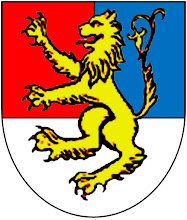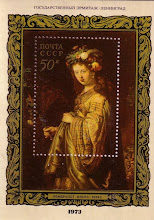INTRODUCTION - PROLOGUE
 His Majesty Willem Frederik George Lodewijk (King Willem II)
His Majesty Willem Frederik George Lodewijk (King Willem II)By the Grace of God, King of the Netherlands,
Prince of Orange-Nassau, Grand-Duke of Luxembourg, Duke of Limburg
The Indonesian Civil Code was first enacted in Netherlands East Indies (Indonesia)  in 1847 by virtue of the Koninklijk Besluit (Royal Decree) during the administration of the Governor General Jan Jacob Rochussen (second photo - right) in behalf of His Majesty Willem Frederik George Lodewijk, by the Grace of God, King of the Netherlands, Prince of Orange-Nassau, Grand-Duke of Luxembourg, Duke of Limburg (King Willem II) (first photo - above).
in 1847 by virtue of the Koninklijk Besluit (Royal Decree) during the administration of the Governor General Jan Jacob Rochussen (second photo - right) in behalf of His Majesty Willem Frederik George Lodewijk, by the Grace of God, King of the Netherlands, Prince of Orange-Nassau, Grand-Duke of Luxembourg, Duke of Limburg (King Willem II) (first photo - above).
 in 1847 by virtue of the Koninklijk Besluit (Royal Decree) during the administration of the Governor General Jan Jacob Rochussen (second photo - right) in behalf of His Majesty Willem Frederik George Lodewijk, by the Grace of God, King of the Netherlands, Prince of Orange-Nassau, Grand-Duke of Luxembourg, Duke of Limburg (King Willem II) (first photo - above).
in 1847 by virtue of the Koninklijk Besluit (Royal Decree) during the administration of the Governor General Jan Jacob Rochussen (second photo - right) in behalf of His Majesty Willem Frederik George Lodewijk, by the Grace of God, King of the Netherlands, Prince of Orange-Nassau, Grand-Duke of Luxembourg, Duke of Limburg (King Willem II) (first photo - above).The Indonesian Civil Code (in Dutch: Het Burgerlijk Wetboek voor Indonesie) was promulgated together with (i) the Indonesian Commercial Code (in Dutch: Wetboek van Koophandel voor Indonesie), (ii) the General Rules of Legislation for Indonesia (in Dutch: Algemene Bepalingen van Wetgeving voor Indonesie, and (iii) the Regulation on Judicial Organisation and the Policy of the Justice (in Dutch: Reglement op de Rechterlijke Organisatie en het Beleid der Justitie). All of the codes were published in the State Gazette (Staatsblad) No. 23 of the year 1847, and announced on 30 April of the same year.
 His Majesty Louis Napoléon Bonaparté, By the Grace of God, Prince Français,
His Majesty Louis Napoléon Bonaparté, By the Grace of God, Prince Français,King of Holland, Count of Saint Leu, (King Louis I Napoleon)
Origin of the Indonesian Civil Code
The Indonesian Civil Code is a blueprint with some modifications of then Nederlandse Burgerlijk Wetboek, which was promulgated in Koninkrijk Holland (5 June 1806 - 9 July 1810) during the reign of His Majesty Louis Napoléon Bonaparté, by the Grace of God, Prince Français, King of Holland, Count of Saint Leu, (King Louis I Napoleon) (third photo - above) of the Bonaparté Dynasty, brother of His Imperial Majesty Emperor Napoléon Bonaparté (fourth photo - below). Koninkrijk Holland was a vassal state of the French Empire and different from Kingdom of the Netherlands (Koninkrijk der Nederlanden).

The Indonesian Civil Code after Indonesia's Independence (17 August 1945)

After the proclamation of Indonesia's independence, the four codes have been maintained and retained by the Republic of Indonesia by virtue of Article II of the Transitional Provision of the 1945 Constitution. The Regulation on Judicial Organisation and the Policy of the Justice has been completely repealed by the enactment of Law No. 18/2003 on Advocates, following other laws on the judicial authority and on the Supreme Court that were previously enacted.
The other three remain valid except for:
The Civil Code:
(1) the rules on marriages (Book I) that have been perfected by Law No. 1/1974;
(2) the rules on real and immoveable property (Book II) that have been replaced by Law No. 5/1960;
(3) the rules on real mortgage/hypothec over land (Book II) that have been replaced by Law No. 4/1996
(3) the rules on real mortgage/hypothec over land (Book II) that have been replaced by Law No. 4/1996
The Commercial Code:
(4) the rules on limited liability companies (naamloze vennootschap) that have been replaced by Law No. 1/1995, the latter has been replaced by Law No. 40/2007.
CODED MESSAGES OF THE INDONESIAN CIVIL CODE AND COMMERCIAL CODE
Apart from being written in Dutch, the two codes contain coded messages that cannot be understood without decoding them.
What coded messages are there? The Indonesian Civil Code contains 1993 articles and the Indonesian Commercial Code contains 754 articles. Thus, it will be a hard labour to find all those coded messages and how to decode them one by one. In the next note I will give the readers only a few examples of those coded messages, which often cannot be found by laymen, even those who study law, because of the language used in the codes.
HOW TO DECODE THE CODED MESSAGES
In decoding the coded messages, like Harry Potter, I need the help of magical things. I use the methods of interpretation, which includes (i) linguistic skills, (ii) historical study, (iii) comparative study and (iv) philosophical readings. They do help. However, since the codes are written in an archaic and rather poetic (Dutch) language, in decoding the coded messages, I need to use my feelings to grasp the poetic language. That's why I also learn classical poetry and romanticism.
In the next note I will explain how I decode the coded messages.
Furst von Oranienbaum








